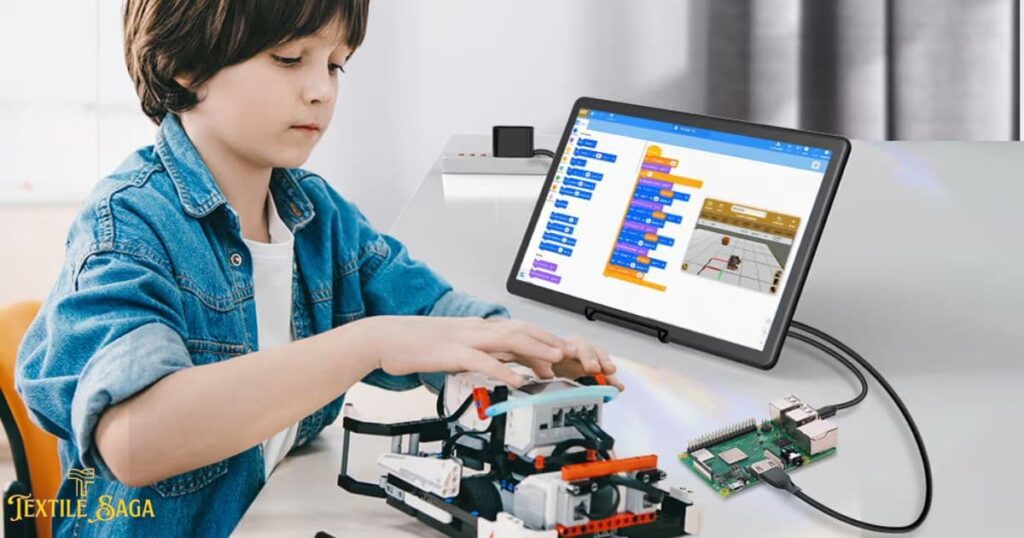Robots Dot to Dot Nattapong is a new way to learn about robots created by Nattapong. Students connect dots to build and understand robots. This hands-on approach helps them learn quickly.
Imagine learning robotics by simply connecting dots. “Robots Dot to Dot Nattapong” transforms complex robotic concepts into easy, engaging activities. Created by the innovative Nattapong, this method uses hands-on learning to make education fun and accessible for everyone.
Who is Nattapong?
Nattapong is a pioneer in the field of robotics education. He has been instrumental in creating innovative approaches to teaching this technology and his work on robot learning has revolutionized students’ understanding of how they can navigate complex systems using their own hands.
Nattapong’s innovative “Dot to Dot” approach has brought about significant changes in the way students learn and interact with robotic technology. Through his use of simple materials, Nattapong hopes to make learning easier for all children.
The Origins of “Dot to Dot” in Robotics
The “Dot to Dot” method in robotics began as a way to make learning more intuitive. Nattapong saw the potential of using simple robots dot to dot puzzles to teach complex robotic concepts. This approach allowed students to learn by connecting dots, making the process hands-on and interactive.
This method has its roots in traditional educational techniques but has been adapted to fit modern robotics education. By combining simplicity with advanced technology, Nattapong has created a powerful tool for learning.
How “Robots Dot to Dot Nattapong” Works
“Robots Dot to Dot Nattapong” works by breaking down complex robotic concepts into simple, sequential steps. Students connect dots to form shapes, which helps them understand how robots are built and programmed.
The approach combines traditional learning techniques with modern robotics technology. By following a sequence of dots, students can see how each step in the process leads to a complete understanding of robotic systems. This method uses hands-on activities to make learning more engaging.
The Benefits of the “Dot to Dot” Approach in Robotics Education
The “Dot to Dot” approach is used in robotics education, which simplifies learning by breaking down complex concepts into simple steps. This method enhances problem-solving skills and fosters creativity among creative ideas.
They develop more advanced thinking abilities that lead directly to successful decision making through repetition or sequential thought patterns. Below are some key benefits of using dot to dot in robotics education:
- Simplified Learning
- Enhanced Engagement
- Improved Problem-Solving Skills
- Better Retention of Concepts
Applications of Robots Dot to Dot Nattapong in Education

In educational settings, Robots Dot to dot Nattapong is used in schools and universities. It is also taught at workshops and training programs where learning can be made more interactive and fun by using robots.
Younger students can benefit from this approach. It not only makes learning enjoyable, but it also fosters an interest in robotics and technology among their peers.
The Future of “Robots Dot to Dot Nattapong”
The future looks promising with “Robots Dot to dot Nattapong”. With the increasing use of AI and machine learning, this method will become even more effective. Future developments in our area make it possible to create a lot richer interactive types of educational content using real-world methods like VR or hands on experiences.
Robotics education, which involves teaching students a basic set of skills through the “Dot to Dot” method, will continue into perpetuate this trend. As technology advances and becomes more accessible, robotics educators must provide students with the necessary tools for future technological advancements.
You May Also Like Our This Article: 127.0.0.1:62893: Basics of Localhost and Port Numbers
What Does the Robot Dot Do?
The robot dot is a crucial part of the “Dot to Dot” method. It serves as a guide for students, helping them connect the dots in the correct sequence. This helps students understand the process of building and programming robots.
The robot dot makes learning more interactive and hands-on. By following the dots, students can see how each step leads to a complete robotic system. This visual and practical approach enhances their understanding of robotics.
What are the Advantages and Disadvantages of Robots?
Robots offer several advantages. On the other hand, robots also have disadvantages. Some of the key advantages and disadvantages are listed below:
Advantages
- They can perform tasks with high precision and efficiency.
- They can work continuously without getting tired, increasing productivity.
- Robots also enhance safety by performing dangerous tasks that are risky for humans.
Disadvantages
- They can be expensive to build and maintain.
- They require complex programming and can malfunction.
- The use of robots can lead to job displacement, as they can replace human workers in some industries.
Who is the Father of Robotics?
George DeVol is considered the father of robotics. He invented Unimate, the first industrial robot in the 1950s, and his work laid a foundation for modern-day advanced robotic systems that are widely used today.
DeVol’s innovations and ideas have made a significant impact on the field of robotics. His work has transformed how tasks are managed, with many industries now using robots due to his innovative inventions that transform traditional methods.
How Can Robots Help Humans?

Humans can benefit from the many ways Robots help them. They have a lot of repetitive, over drafty tasks to complete (or perform) so humans are freeing up for more creative and complex work. Robots may also be used in dangerous environments or as part control on hazardous areas.
Robots are used in healthcare, manufacturing and exploration. They can perform tasks such as surgeries, patient care, advanced medical technology (like x-ray machines) and precision medicine through automation or robotic development
What are the Types of Robots?
Robots can be classified into various categories, with exploration robots being used for different purposes. Robots can perform a variety of tasks. Such as welding and assembling is done by manufacturing robots.
Service robot jobs for cleaning and delivery by humans are common among industrial robot-related industries. Medical robot assistance is used to care for patients or conduct surgeries on an individual basis. Below are some common types of robots:
- Industrial Robots
- Service Robots
- Medical Robots
- Educational Robots
- Military Robots
- Agricultural Robots
Enhancing Engagement and Retention Through Gamification
Gamification is a strategy that allows students to earn rewards and achievements through games, which encourages them to continue learning. This method makes retention more effective by making the process of studying enjoyable and memorable.
In robotics education, students can learn more through game elements and engage with their peers. Gamification enhances engagement by incorporating engaging games throughout the curriculum. This approach fosters learning in an interactive environment.
Future Prospects and Innovations
Robotic education has a bright future with continuous innovations in robotics. AI and machine learning advancements will enhance robot intelligence, equip us more intelligent machines that can learn anything from basic to advanced technologies.
Future developments of the technology will create increasingly engaging educational experiences. Robotics education will also become more accessible. New technologies will allow students from all backgrounds to learn about robotics.
Case Studies and Success Stories
Several case studies highlight the success of the “Dot to Dot” approach in robotics education. In one case, a school reported a significant increase in student engagement and understanding of robotics concepts after implementing this method.
Success stories from various educational institutions show that the “Dot to Dot” approach effectively enhances learning. Students who previously struggled with robotics concepts now find them easier to understand and apply.
The Concept of Dot Connecting by robot’s dot to dot Nattapong
The concept of dot connecting in Nattapong’s approach involves linking dots to form a complete picture. This method simplifies complex robotic concepts, making them easier for students to understand.
It provides a hands-on learning experience that enhances comprehension. By connecting dots, students can see how each step leads to a finished product. This visual and sequential learning method helps them grasp the fundamentals of robotics more effectively.
Technological Innovation Behind the Project
Nattapong’s project is a result of its simplicity and effectiveness. It has combined traditional robots dot to dot puzzles with advanced robotics technology, creating essentially the same learning platform.
The “Dot to Dot” method is an innovative and powerful way of teaching robotics, which integrates sensors with AI for real-time feedback.
Artistic Expression and Robot Precision
Nattapong’s method blends artistic expression with robot precision. Students connect dots to create intricate designs, learning about precision and accuracy in the process. This approach makes robotics education more creative and enjoyable.
Art and robotics are integrated into a student’s curriculum, providing both technical support for the field of art as well as creative assistance to develop proficiency in engineering.
Educational and Interactive Components

The “Dot to Dot” approach employs various educational and interactive elements. It includes hands-on learning experiences that reinforce the content of knowledge, making complex concepts more easily understood.
Interactive components, such as real-time feedback and adaptive learning paths, enhance the educational experience. This approach ensures that students are always engaged and motivated throughout their education by incorporating interactive elements into the curriculum to keep up with student interest.
The Breakthrough in Robots Dot to Dot by Nattapong
Nattapong’s “Dot-to-Dot” approach simplifies and effectively conveys complex concepts to all students, making robotics education accessible.
Nattapong’s innovative approach to robotic teaching has brought about a significant shift in the way students learn and understand it, making it more engaging.
Visionary Aspects of Robots Dot to Dot by Nattapong
Nattapong’s vision for the “Dot to Dot” approach is to make robotics education accessible to all, emphasizing the importance of making it an easy task and encouraging students to engage in its concepts.
His innovative approach to education merges traditional classroom practices with cutting-edge technology. The outcome is a potent and efficient learning environment that equips students for their future endeavors
Key Innovations in Robots Dot to Dot Nattapong
Nattapong’s approach revolutionizes robotics education, making it more accessible and engaging for students of all ages. Some of the robot’s dot to dot Nattapong key innovations are explained below:
Modular Design
Nattapong’s method is a flexible and adaptable approach that allows students to learn at their own pace, without the need for formal training or assessments. This flexibility enhances the effectiveness of learning with personalized instruction along similar lines over time.
User-Friendly Interfaces
Nattapong’s method features user-friendly interfaces that make learning easier. These interfaces are designed to be intuitive and accessible, ensuring that students can navigate the learning platform with ease.
Advanced AI Integration
Advanced AI integration in the “Robots Dot to Dot Nattapong” system provides personalized learning experiences, real-time feedback and adaptive learning paths. This integration helps students understand complex concepts more easily.
FAQ’s
Where is Robots Dot to Dot used?
It is used in schools, universities, workshops and training programs to teach robotics.
What technology is integrated into the method?
The method uses sensors, AI, and advanced robotics technology to provide a hands-on learning experience.
Can anyone use Robots Dot to Dot?
Yes, it is designed to be accessible and easy to use for students of all ages and backgrounds.
How does the robots dot to dot method work?
Students connect dots in sequence to build and understand robotic systems step by step.
Conclusion
Robots Dot to dot Nattapong”, which is accessible worldwide, introduces robotics education through its user-friendly interface and engaging games. It teaches students fundamental concepts while also providing them with practical skills that they can use in the real world.
This innovative approach is shaping future generations of robot enthusiasts and experts. Nattapong transforms the field by simplifying concepts into easy-to-use, hands-on activities that can be practiced at any.

I am experienced with over four years of expertise, specializing in multi-niche content. My diverse knowledge base allows me to create engaging and informative articles across various topics.